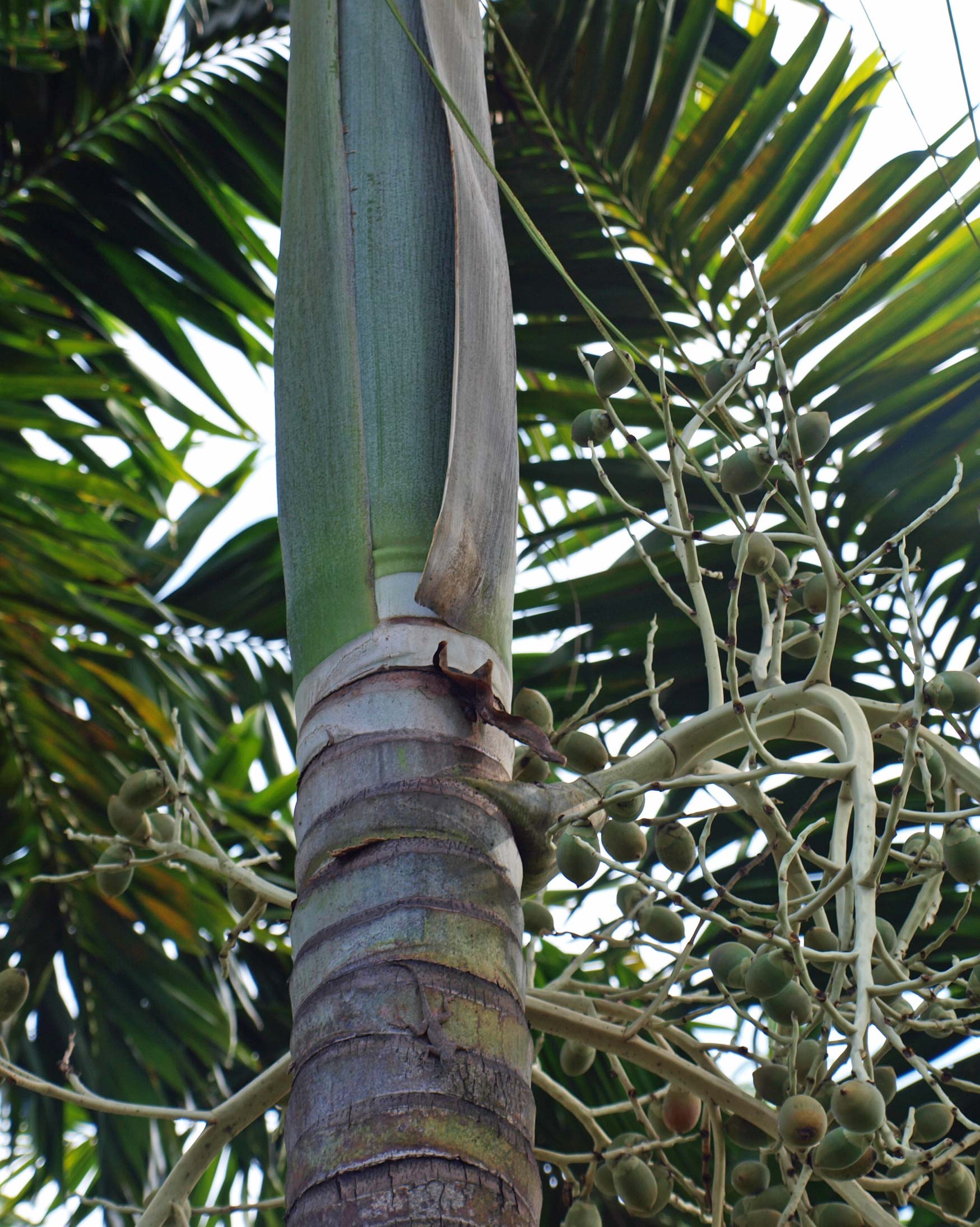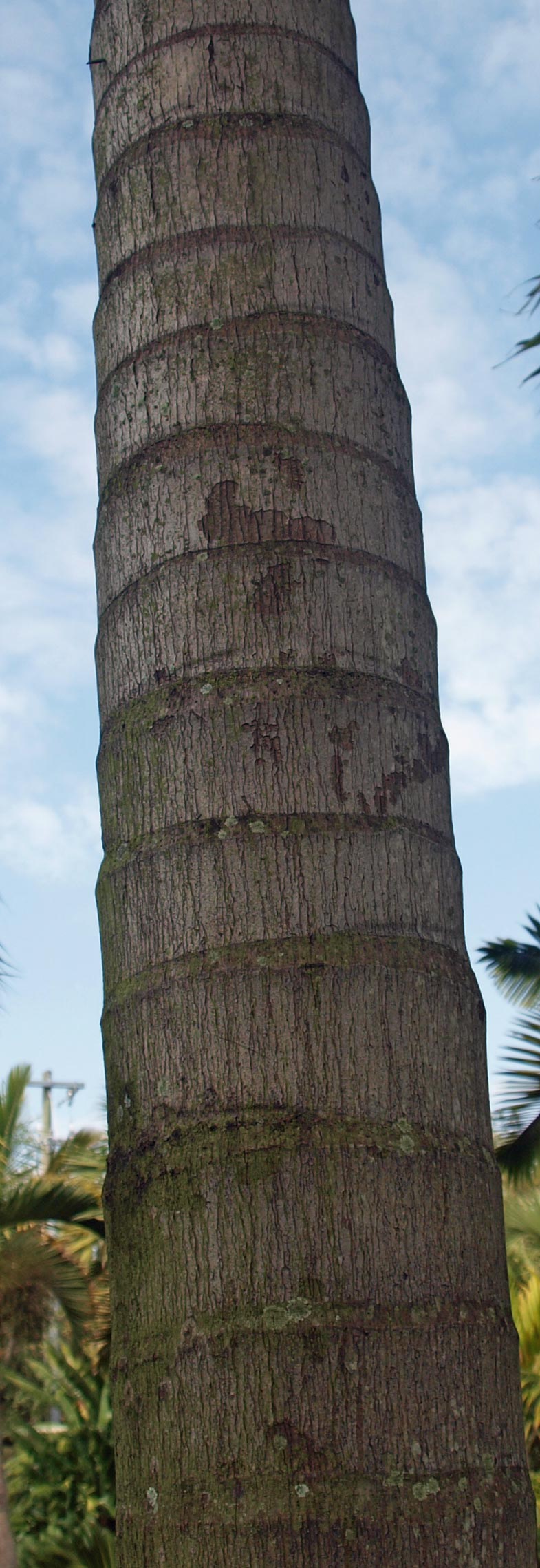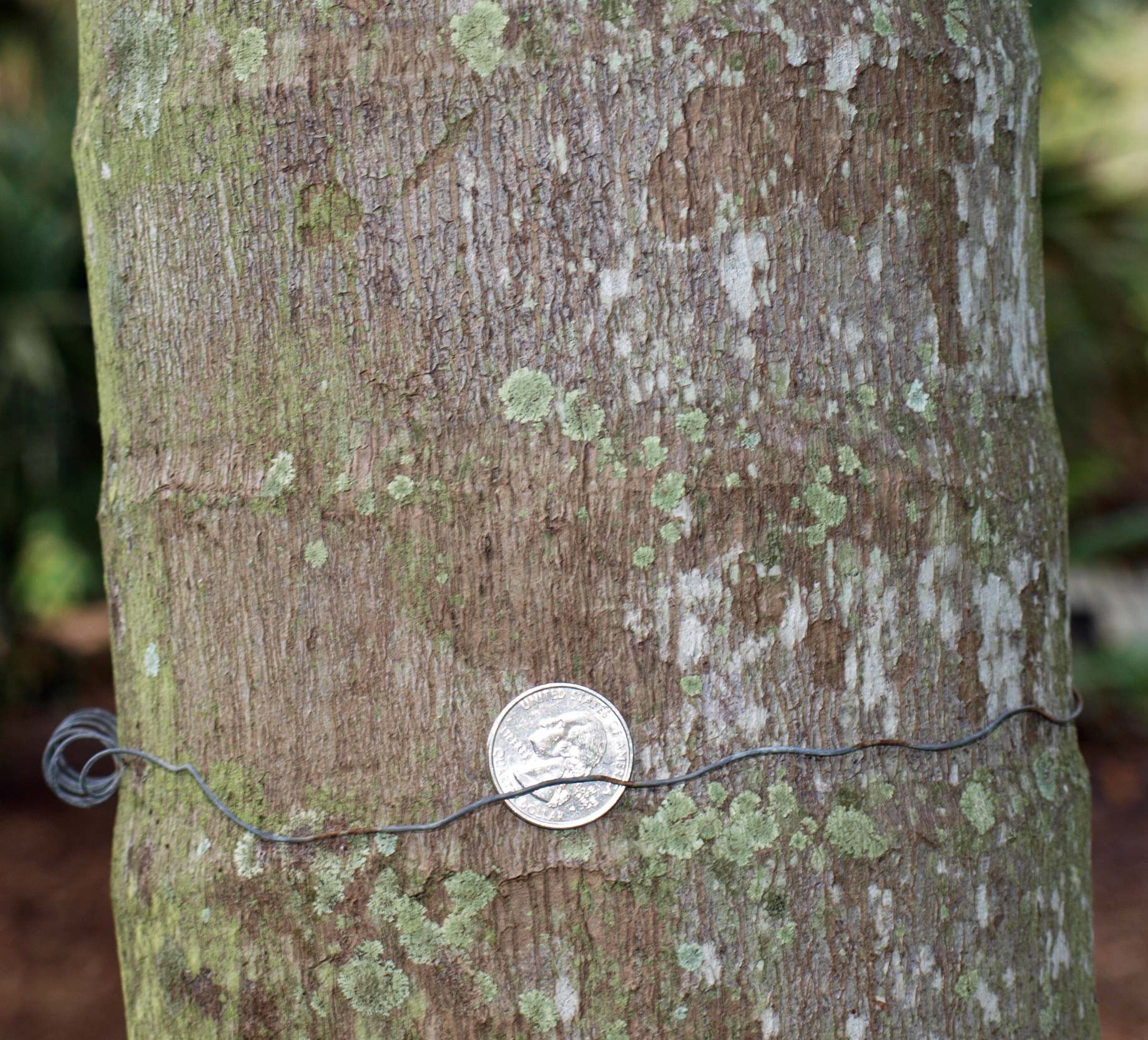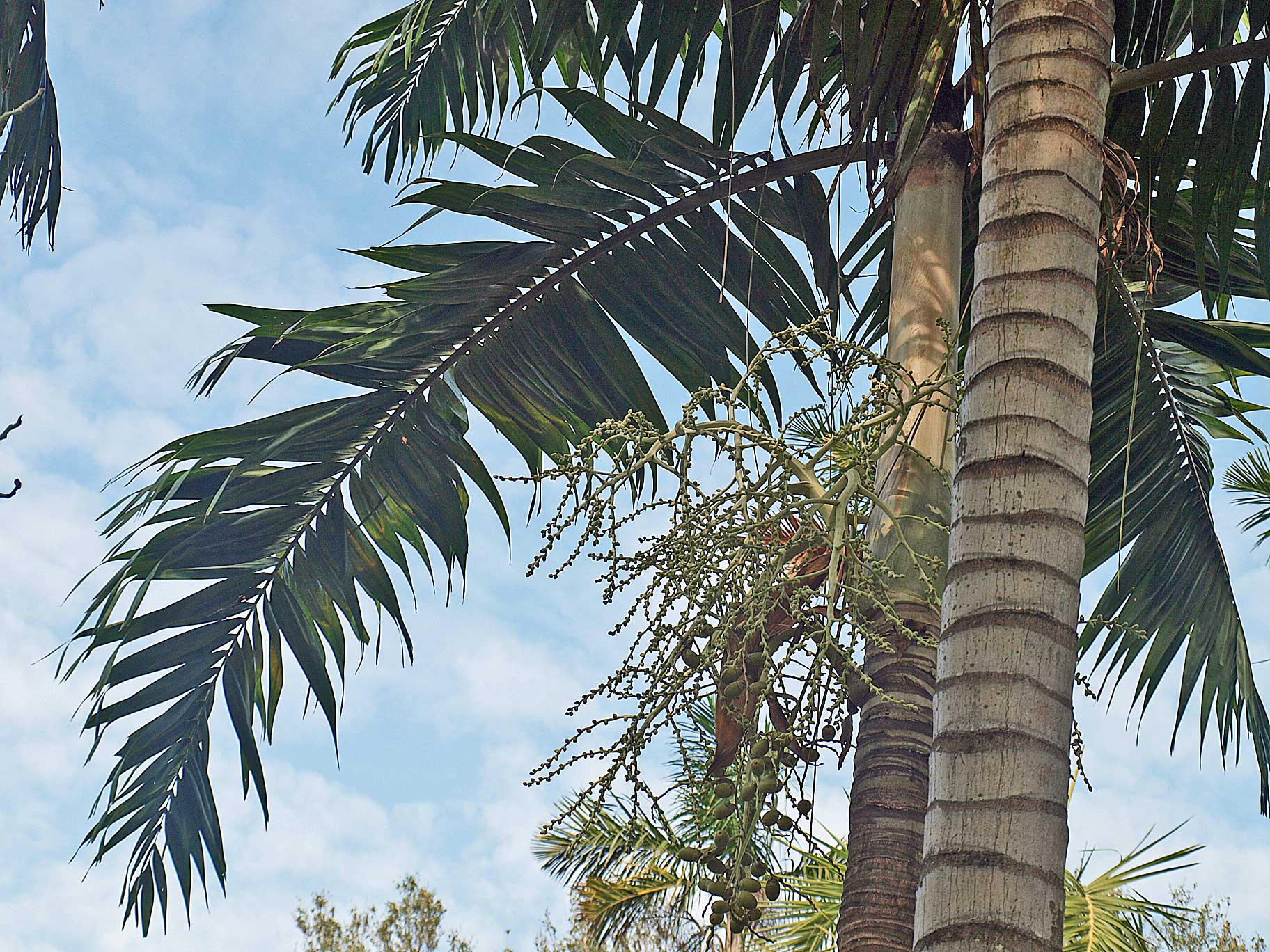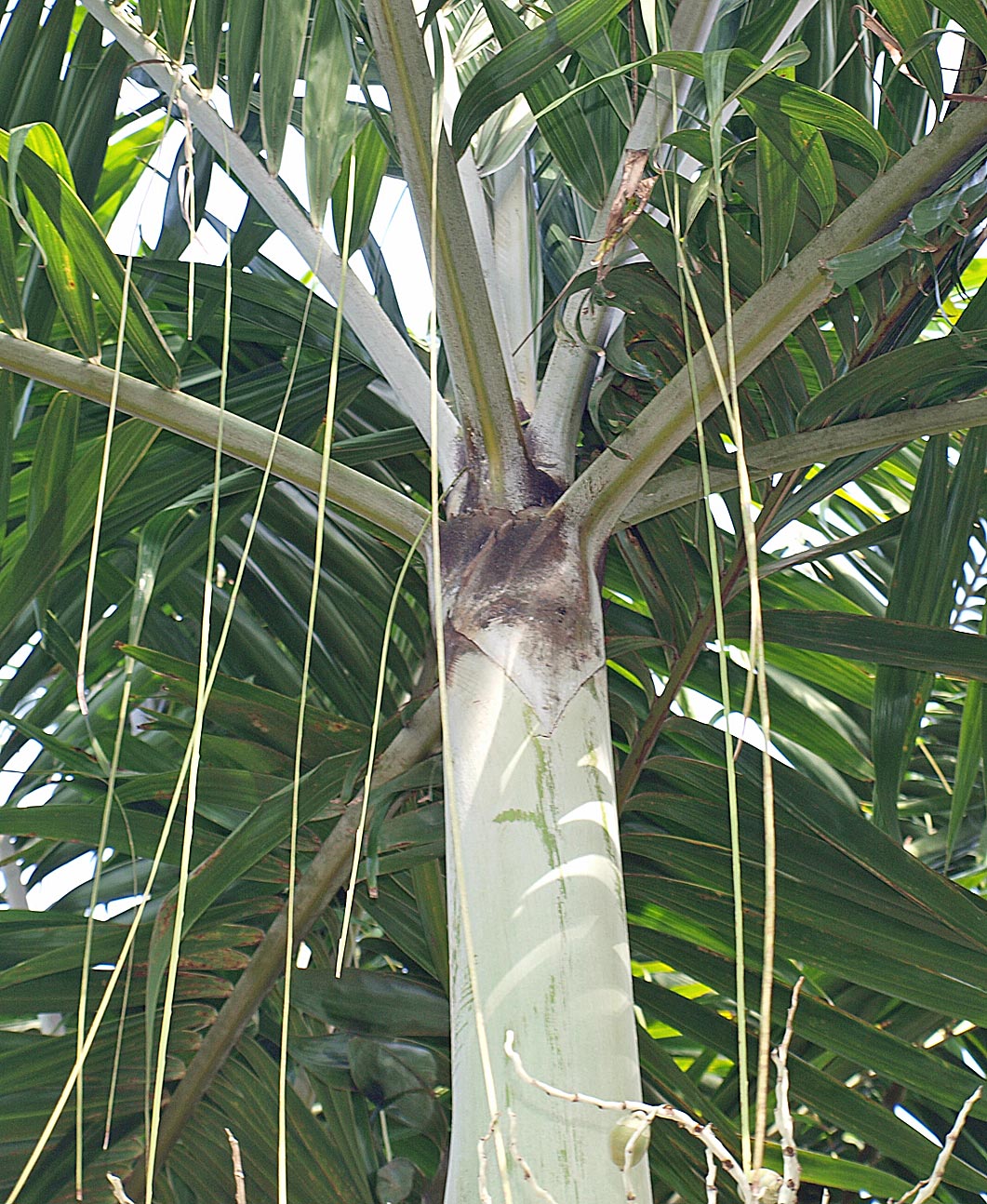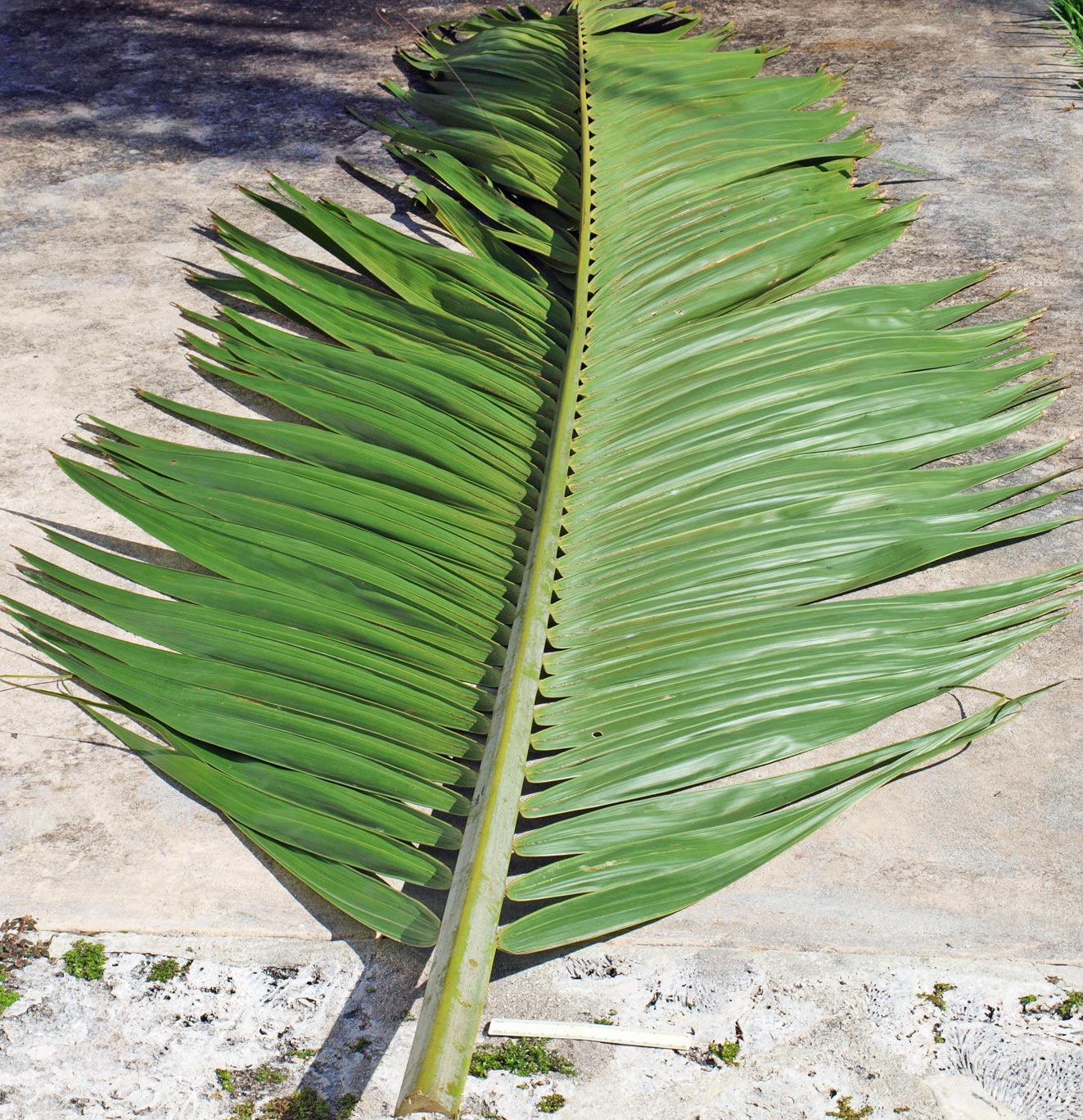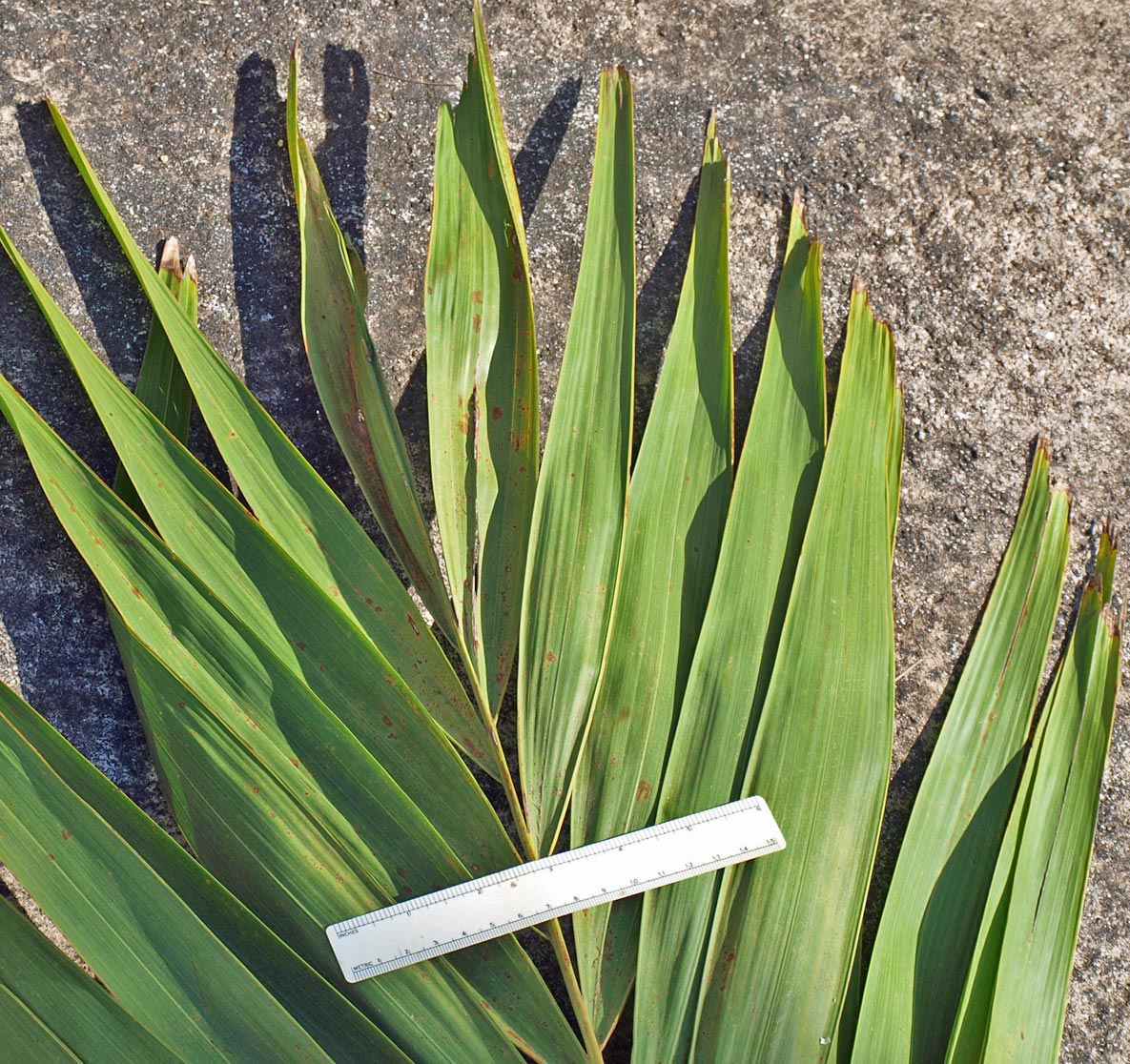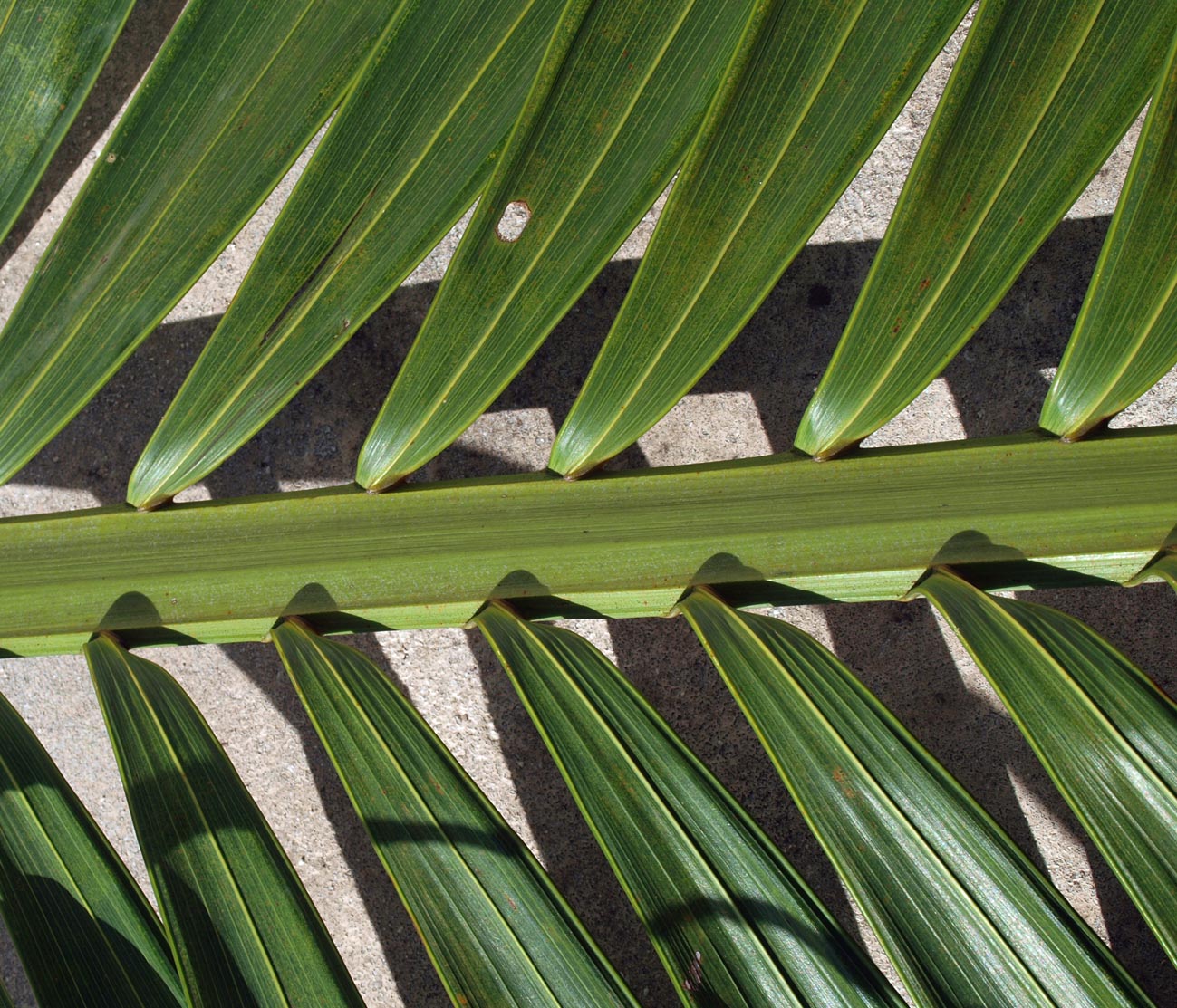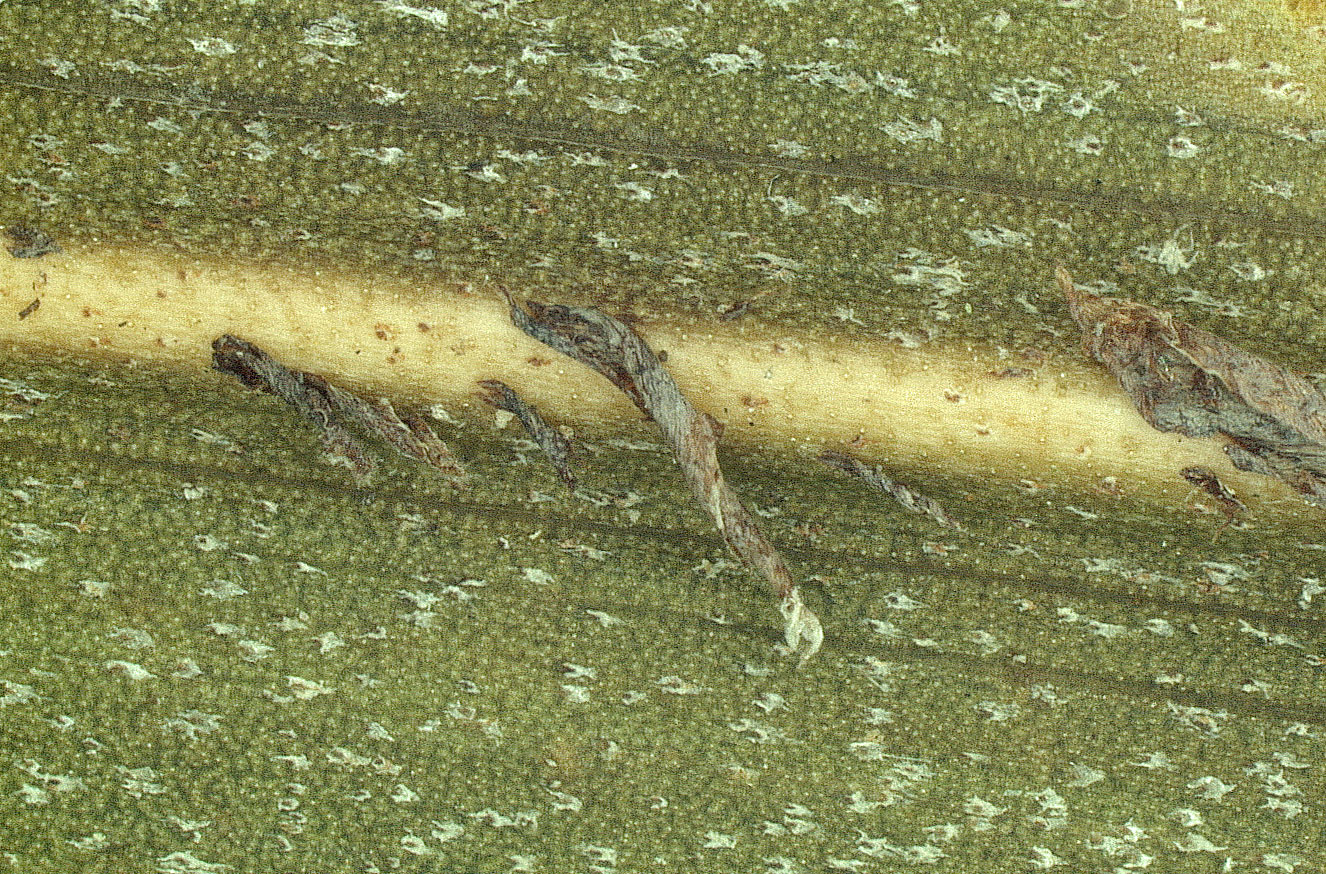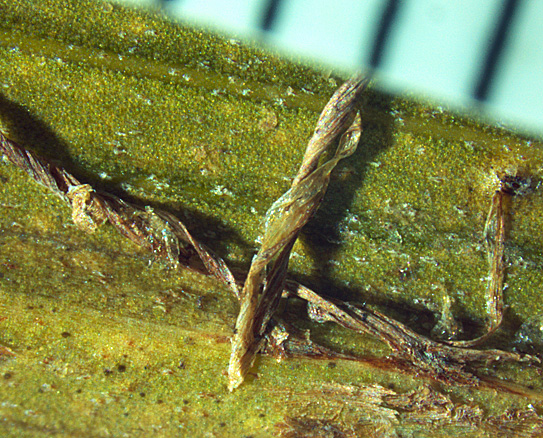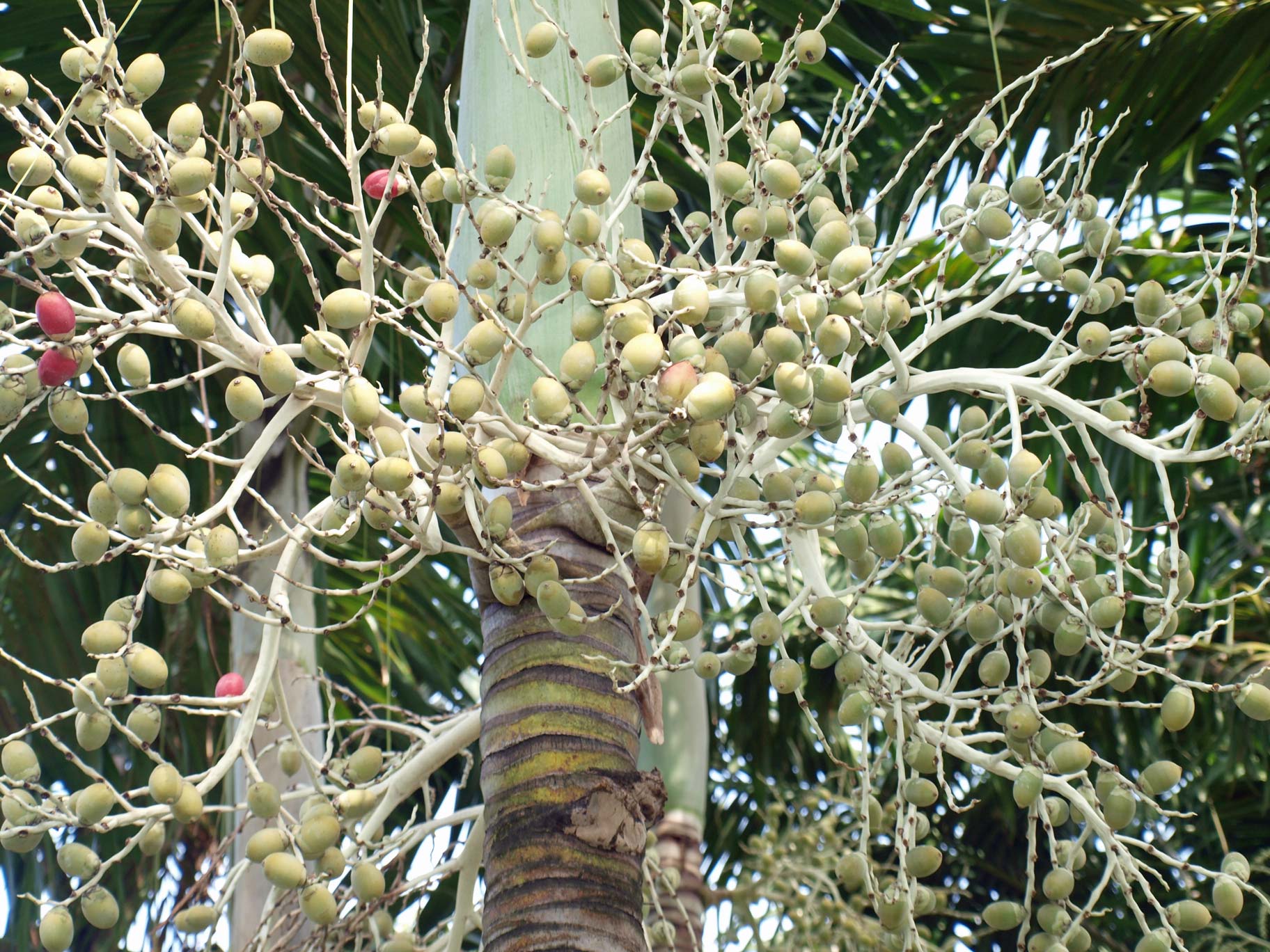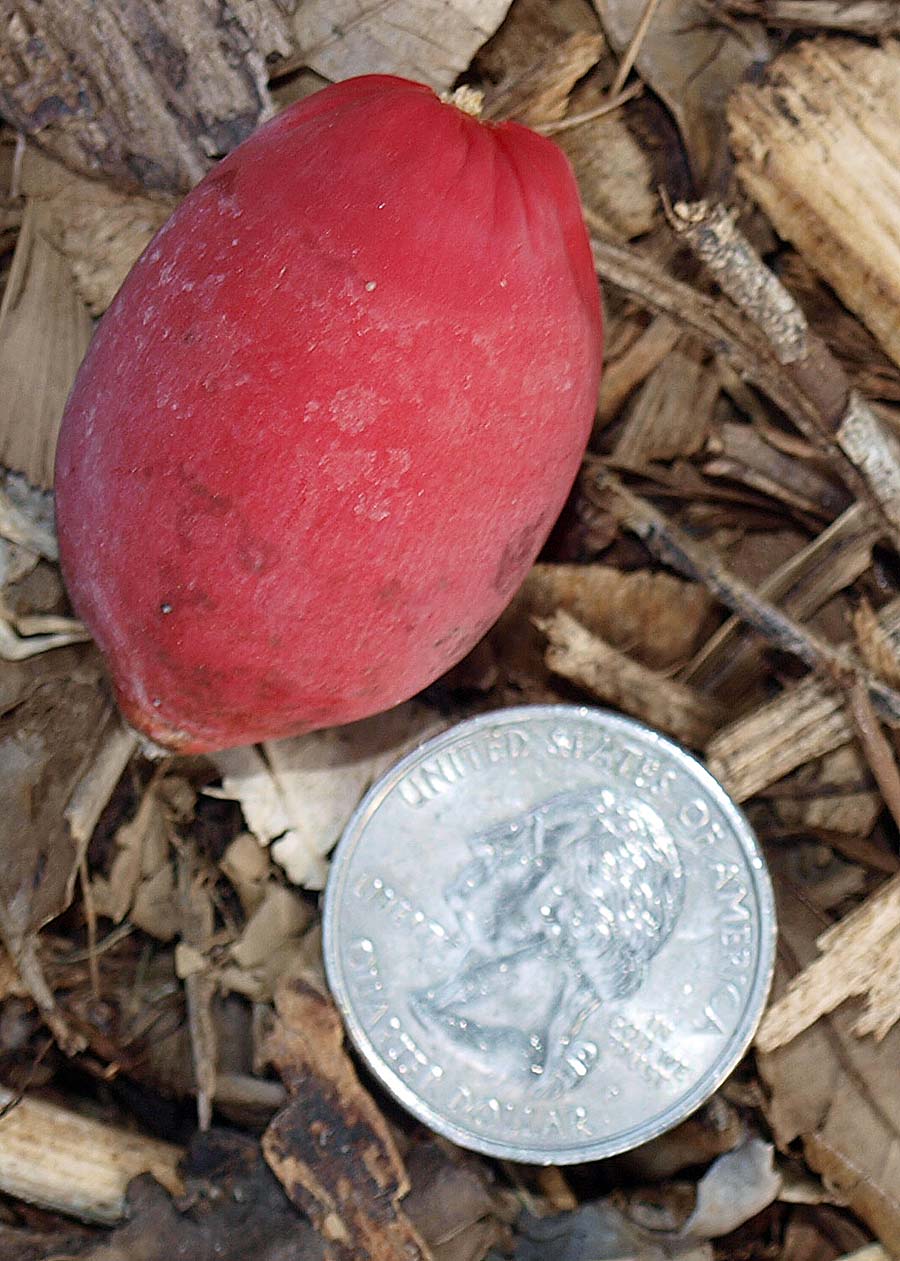Veitchia arecina
|
Veitchia arecina canopy |
|
Veitchia arecina crown shaft |
|
Veitchia arecina stem with leaf scar rings |
|
Veitchia arecina stem with closer view of leaf scar rings |
|
Veitchia arecina stem base |
|
Veitchia arecina stem with leaf scar rings, leaf and inflorescence |
|
Veitchia arecina leaves with reins |
|
Veitchia arecina leaf |
|
Veitchia arecina leaf apex |
|
Veitchia arecina leaflet tips |
|
Veitchia arecina leaf rachis and leaflet attachment |
|
Veitchia arecina leaf abaxial surface with ramenta |
|
Veitchia arecina leaf abaxial surface with ramenta (closer view of dried specimen) |
|
Veitchia arecina leaf abaxial surface with ramenta (closer view of dried specimen) |
|
Veitchia arecina fruit |
|
Veitchia arecina ripe fruit |
Common name
montgomery palm, sunshine palm, tepua
Description
Stems: Solitary, slender, gray stems to 25 m tall and up to 28 cm in diameter, bulging at the base, with close rings of leafleaf:
in palms -- the leaf blade (which is usually divided into leaflets or leaf segments), the petiole (or leaf stalk) and the sheath (which forms the attachment of the leaf to the stem)
scars. Leaves: Pinnatepinnate:
like a feather; palms with pinnate leaves usually have compound leaflets attached to a rachis, although a pinnate leaf may be entire with pinnate veins (e.g., <em>Chamaedorea metallica</em>)
, reduplicatereduplicate:
Most palm leaflets or leaf segments are obviously folded. If the folds create an upside-down V-shape, with the margins lower than the midrib (so that rain might "run off the roof"), the folding is reduplicate.
, to 3 m long, with an arching rachisrachis:
an extension of the petiole through the blade of a pinnate leaf to which leaflets are attached
holding regularly arranged, drooping leaflets in a single plane. The crown shaftcrown shaft:
a cylinder of clasping leaf sheaths toward the apex of the stem, found in some pinnate-leaved palms (e.g., <em>Wodyetia bifurcata</em>)
is 60-140 cm long, somewhat swollen at the base, pale green in color, covered with fine, silvery hairs and gray to brown/black scales at the apex. Leaflets are green above and below, lanceolatelanceolate:
term to describe leaves and leaflets that are longer than wide and widest below the mid-point; lance-shaped
, with thick marginal ribs and prominent midribs. Leaflet tips are jaggedly toothed (somewhat praemorsepraemorse:
with a jagged edge or like a fish tail
). Flowers and fruits: Inflorescenceinflorescence:
the reproductive structure of a flowering plant, including palms, consisting of flowers and associated bracts
is stiffly arching, to 1 m long and branched to three or four orders. Greenish to white male and female flowers are borne on the same inflorescenceinflorescence:
the reproductive structure of a flowering plant, including palms, consisting of flowers and associated bracts
. The ovoid, red fruits are 2.5-5 cm long.
Diagnostic features
Field: Erect, solitary palms with close leafleaf:
in palms -- the leaf blade (which is usually divided into leaflets or leaf segments), the petiole (or leaf stalk) and the sheath (which forms the attachment of the leaf to the stem)
scar rings on the slender gray stem; pale green crown shaftcrown shaft:
a cylinder of clasping leaf sheaths toward the apex of the stem, found in some pinnate-leaved palms (e.g., <em>Wodyetia bifurcata</em>)
with blackish scales at the apex; leaves held mainly horizontally or higher; leaflets drooping and growing in a single plane.
Lab: Lines of tiny white scales covering the underside of the leaflets; obvious dark brown ramentaramenta:
irregularly shaped, thin scales, sometimes found along the abaxial midrib of a leaflet
along the base of the midrib; marginal veins and midrib prominent.
May be confused with
Adonidia merrillii, but it is usually a smaller statured palm with ascending leaflets held in a V-shape, rather than drooping leaflets. Other Veitchia species; see those descriptions for diagnostic features.
Distribution
Native to Vanuatu
Additional comments
This Veitchia is widely cultivated and might hybridize with other species in landscape plantings. Similarities of palms in this genus make determination of species difficult.
Scientific name
Veitchia arecina Becc.
Family
Arecaceae/Palmae
Synonyms
Veitchia hookeriana Becc.
Veitchia macdanielsii H.E.Moore
Veitchia montgomeryana H.E.Moore



